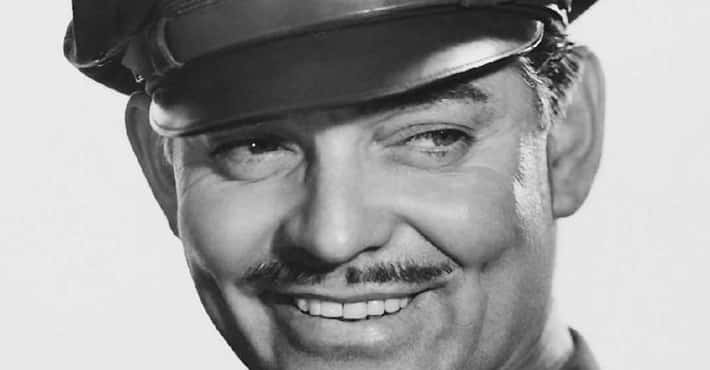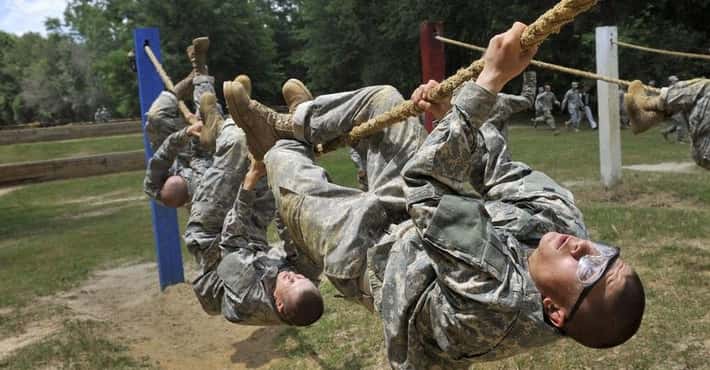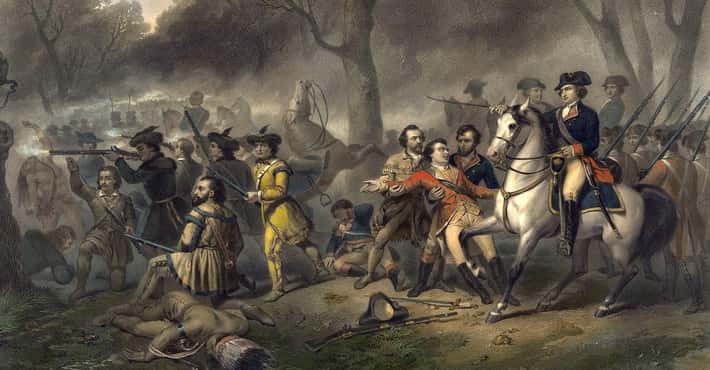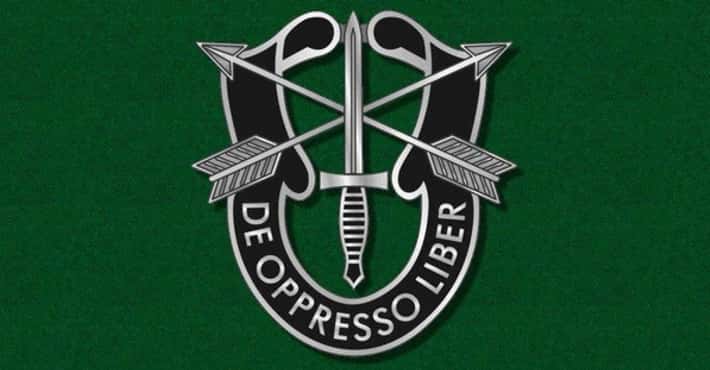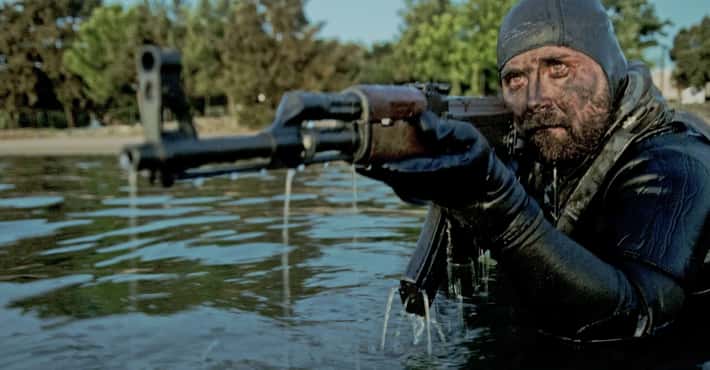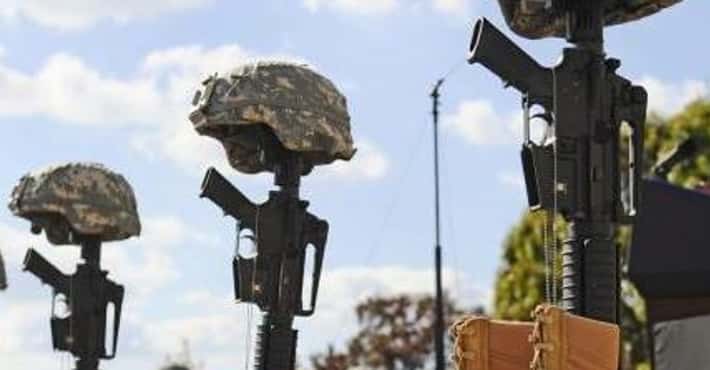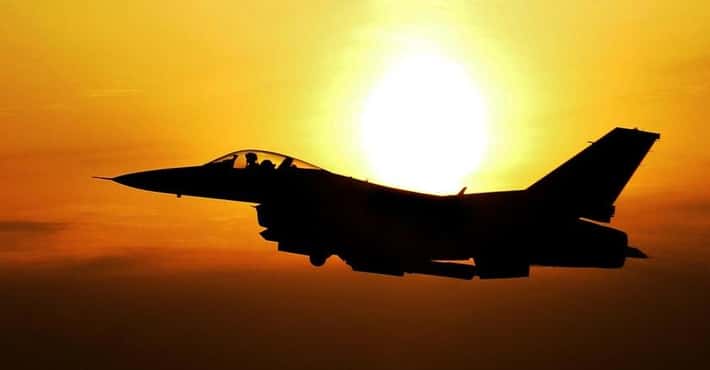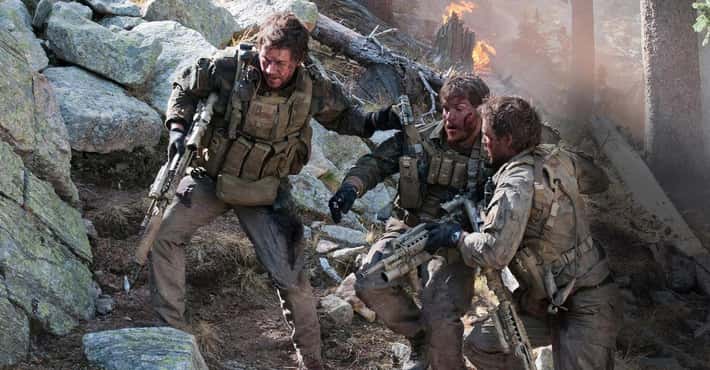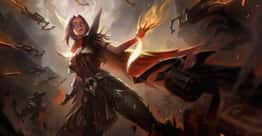A Visual History Through 24 American Military Uniforms
The history of the American Army uniform is a fascinating subject. You might wonder how the military went from wearing tricorn hats to using Kevlar. After nearly 20 years of collecting original historic military uniforms and equipment, reading books, talking to historians, and doing research, this military buff has realized that all uniforms descend from others in one way or another, somewhat like a family tree.
For the sake of clarity and coherence, this list will focus on the campaign (combat) clothing and personal equipment of the average enlisted soldier in the US Army from the American Revolution to the present.
The history of all American army uniforms for both men and women is too vast to condense on this platform, as it includes the history of attire for cavalry, artillery, dragoons, medical personnel, scouts, officers, engineers, and other specialists, as well as privately purchased uniforms. Equally vast are the apparel and equipment of the US Air Force, Navy, Marines, Special Forces, and Coast Guard.
For now, enjoy the pictorial history of the American Army combat uniform.
Revolution! The Continental Army
Photo: H. Charles McBarron / Wikimedia Commons / Public domainThe American Revolution flung colonial Americans into war without a universal, standard uniform. As a result, clothing and equipment varied greatly. The ideal basic uniform and equipment kit consisted of:
- Knee-length navy blue coat with red facings
- White or off-white breeches
- A linen or cotton pullover shirt
- A waistcoat (vest) of cotton, linen, or even wool
Civilian and hunting clothes were also used due to shortages. A tri-cornered hat was the ideal, but men wore a wide variety of similar military and civilian headgear.
The most common long arms were the British Brown Bess flintlock musket. Other weaponry might include:
- French flintlock muskets
- Hunting rifles (muskets)
- Leather cartridge boxes with leather slings (others used a "belly box" cartridge pouch carried on a belt)
- Cotton or linen haversacks
- A triangular socket bayonet and scabbard with sling
The War Of 1812: The Age Of The Shako Headdress
The young United States was ill prepared to fight Great Britain in 1812, but American regulars and state militia units went to war with what they had on hand. Substitute clothing and equipment items were used when no other alternatives were available. The ideal basic uniform and equipment kit consisted of:
- Model 1812 blue and red coatee
- Model 1812 wool-felt shako
- Broadfall-front white cotton trousers
- Gray wool broad fall front trousers
- Tarred canvas button up spatterdash gaiters
- Low-quarter lace-up shoes.
- Shoes and lace-up boots, brought from home or purchased
- Model 1813 blue wool coatee
- Model 1813 leather shako
- Cotton or linen shirt
- Models 1797 and 1808 flintlock muskets
- Lherbette knapsack
- Wooden or metal canteen, cork, and linen or leather sling
- 1808 leather cartridge box and leather sling
- Cotton haversack and sling with pewter buttons
- Triangular spiked bayonet with scabbard and sling
The War of 1812: Late War Gray Short Jackets
Photo: H. Charles McBarron, Jr. / Wikimedia Commons / Public domainAs the War of 1812 progressed and the Americans realized it was going to be a difficult fight, resources became scarce. To cut costs and production time, a waist-length, gray roundabout/shell jacket came into use when the older pre-war and wartime blue wool coatees ran low.
The expediency model short gray roundabout jacket is pictured above during the Battle of Chippawa.
Equipment seems to have not changed significantly in this period.
1814 To The 1830s: Tailcoats To Shell Jackets
Photo: H. Charles McBarron, Jr. / Wikimedia Commons / Public domainAfter the fight with Britain was over, the US Army collected itself and returned to producing coatees, but without the red trim and with a somewhat shorter coattail in the back. The dark gray trousers continued in service. Overall, the kit consisted of:
- The 1825 dark blue coatee, which replaced the war time 1814 blue coatee
- A privately purchased shirt
- White broadfall cotton trousers followed by…
- Sky blue or dark gray broadfall front trousers
- Pattern 1822 lace-up boots and low quarter lace-up shoes
Equipment seems to have not changed significantly in this period.
The Second Seminole War
Photo: Unknown / Wikimedia Commons / Public domainIn an attempt to remain free from American control, the Seminole people (comprising various individual Native American tribes) of the southeastern US went to war against the US again in 1835 under the leadership of Osceola.
The practicality of the short, gray wool jacket of the War of 1812 was evident, and in the years following the war, the US government returned its focus to expanding its power into the lands it obtained as a result of the Louisiana Purchase.
As soldiers were sent into the wilderness to set up forts or protect traders, the densely wooded forests and swamps forced both US regulars and militiamen to resort to guerrilla warfare. The tailcoat proved to be unsuitable, particularly during the First Seminole War, because of the long coattails in the back, whereas a short jacket was easier to move in. Additionally, it was simpler and cheaper to make.
Slowly, the tailcoat as well as the tall leather shako were semi-retired and retained only as parade and dress uniforms for special or official occasions.
Beginning in the mid-1820s, a new style of headwear was adopted: the 1825 pinwheel forage cap. It was a low-sitting, navy blue wool cap with a wide, stiff crown, much like a pinwheel. It had a button on the top of the crown with stitching emanating from the center. The bill was made of leather and square-shaped.
During periods of less large-scale military activity, the army was often reduced in size, while also being relatively spread out. Often, regular and militia units were clad in uniforms that were mixed and matched.
It was also around this time that the army adopted a taller boot, called pattern 1822, which was black in color, rough-out leather with a square toe and made on straight lasts.
The ideal standard infantry uniform was meant to be as follows:
- Pattern 1825 pinwheel forage cap, navy blue
- Leather folding forage cap
- Pattern 1831 sky blue roundabout shell jacket with white trim
- Sky blue dismounted foot trousers
- 1822 boots
- Shirt brought from home or purchased on the market
- 1808 flintlock musket
- White three-button cotton haversack and sling
- Triangular bayonet, scabbard, and leather sling
- 1820s pattern black leather cartridge box and leather sling
- Military issue blanket worn as a “blanket roll” across the body
The US-Mexican War: 1846 To 1848
Photo: Henry Alexander Ogden / Wikimedia Commons / Public domainWhen President James K. Polk bullied Mexico into war in 1846, the army had been transitioning from flintlock muskets to faster and better quality percussion cap long arms. This change began to affect the uniform and personal equipment kit. The ideal infantry uniform and kit included the following:
- Pattern 1833 sky blue shell jacket
- Sky blue broadfall front foot trousers
- Enlisted pattern 1839 wheel cap
- Privately purchased shirt
- 1822 pattern boots or low quarter lace-up ankle boots
- 1842 Springfield musket or 1808 flintlock musket
- 1839 or 1842 black leather cartridge belt and white leather sling
- White cotton haversack
- Triangular socket bayonet with black leather scabbard and white leather frog
- White buff leather waist belt and first pattern ovular “US” belt plate
- Tarred canvas haversack and army issue red wool blanket
- Black leather percussion cap box
- Tin drinking mug
The Great American Civil War: 1861 To 1865
Photo: BFS Man / Flickr / CC BY-NC 2.0It's a common misconception that during the American Civil War, the northern Federal forces strictly wore blue and the southern Confederate forces strictly wore gray. The truth is much more colorful - figuratively and literally.
The outbreak of war in April of 1861 saw enormous fanfare, pageantry, and romanticism associated with the drama of conflict. Hundreds of newspapers and broadsides ran printed sketches of dashing young officers charging into battle with shimmering sabers. Because of this enthusiasm and bravado, the regular army and militia units set out clad in uniforms ranging from drab and simple to flashy and intricate. Union army regiments wore standard blue uniforms, gray militia uniforms, Zouave uniforms influenced by the French North African colonial troops, and more than a dozen other uniform designs.
The regular US forces went to war wearing the pre-war knee-length Prussian blue frock coat and hardee hat. Additionally, the more common four-button sack coat and sky blue trousers were issued by the millions with a more practical forage cap that was styled after the French army kepi.
The older white buff leather equipment had already begun to be phased out in favor of a set of black leather and tarred canvas equipment. The ideal Union uniform for infantry was meant to be as follows:
- 1858 four-button Prussian blue sack coat, knee-length frock coat or short dark blue shell jacket
- 1858 pattern sky blue, wool dismounted foot trousers
- Military issue white linen or cotton pullover shirt
- 1855 navy blue forage cap or McDowell pattern forage cap
- Black hardee hat or black slouch hat.
- Dismounted, sky blue, wool greatcoat
- Rough-out leather "Jefferson" pattern brogans (short boots)
- 1855 black leather waist belt with second pattern "US" ovular belt plate
- Federal issue tarred canvas haversack and sling
- .57- or .69-caliber black leather cartridge belt with oval "US" belt plate
- Black leather sling for the cartridge box with circular federal eagle plate
- 1857 triangular spike socket bayonet with leather scabbard and black loop frog
- 1858 bullseye canteen with a sky blue, dark blue, or brown wool cover and white linen or leather sling
- Tin drinking mug
The Plains Wars: 1866 To 1891
Photo: US Army Center of Military History / DA Poster 21-45 / Wikimedia Commons / Public domainThe unexpected suffering during the American Civil War affected military thinking, which then affected uniform and equipment development. From 1866 to the late 1870s, supplying the same uniform to each soldier was difficult, and soldiers were often clad in mixed pieces.
The four-button sack coat, forage cap, and sky blue trousers continued in service until the early 1870s, when they began to be phased out for the 1872 and 1874 fatigue uniforms.
The short-lived 1872 fatigue blouse is a strange and uncommon garment. Made to fit loosely, this nine-button, single-breasted tunic was entirely pleated, perhaps as an experimental uniform that would allow more movement by the soldier. Very little information about it survives, and it seems to have been disliked. Therefore, it likely had a short life in the history of American military uniforms.
By 1874, the ideal US Army infantry uniform was meant to include the following:
- 1874 five-button fatigue tunic
- 1874 sky blue dismounted trousers
- 1850s Civil War era brogans (short boots)
- Military issue or private purchased shirt
- 1874 forage kepi, 1873 Andrew’s hat or 1876 black campaign hat
- 1873 Springfield trapdoor rifle
- 1874 black leather waist belt and rectangular "US" belt plate
- Leather "McKeever" pattern black cartridge box
- 1873 socket bayonet, black metal scabbard and black leather swivel frog with brass "US" or state rosette
- 1872 two-piece mess kit
- 1878 canvas and leather knapsack
- Hagner pattern black leather cartridge box, worn on the waist belt
- 1874 canvas haversack with Chambers pattern sling
- 1872 canteen with cotton duck canvas cover and linen sling
The Spanish-American War, Phase I: The 1889 Uniform
Fighting in the deserts, mountains, and forests of the West against the Indigenous peoples of America affected military thinking, and a new uniform began to be designed, produced, and distributed. This ensemble was somewhat more practical for guerilla warfare and used elements of uniforms that were to come in the next 40 years:
- Patterns 1885 or 1887/1889 five-button Prussian blue tunic
- 1885 mid-blue dismounted trousers
- 1887 canvas lace-up gaiters
- Pattern 1881 and 1892 campaign low-quarter shoe
- M1883 blue flannel, three-button pullover shirt
- 1883 or 1889 campaign hats
- 1895 pillbox garrison cap
- 1878 knapsack, 1885 blue/gray blanket and 1880s shelter half (half a tent)
- 1881 Mills-Orndorff cotton webbing cartridge belt in dark blue or khaki
- 1878 haversack and wide black leather detachable sling
- 1878 canteen and narrow black leather detachable sling
- 1878 two-piece mess kit with tin drinking mug
The same 1870s bayonet was still in use.
Spanish-American War, Phase II: The 1898 Khaki Uniform
Photo: Internet Archive Book Images / Flickr / Public domainIn the spring of 1898, it was almost immediately apparent to the government and the army that the 1887/1889 blue wool uniform ensemble was unsuitable for the tropical climate of Cuba. It was the beginning of the end of the blue combat uniform.
Loosely patterned after the British khaki drill tunic (seen during the Second Anglo-Boer War), the pattern 1898 tunic broke away from the tradition of issuing enlisted soldiers uniforms that were different from those of officers. The tunic came with a matching pair of cotton breeches that reached halfway below the knee and laced up. These may also have been the first garments to be worn with a belt rather than suspenders. The full outfit included:
- Early-pattern 1898 khaki tunic with blue facings and attached cotton belt
- Matching pair of khaki trousers and suspenders
- Pattern 1898 campaign hat
- Pattern 1892 campaign shoe and 1897 canvas lace-up gaiters
Equipment basically stayed the same as in the 1880s. Soldiers were now armed with the .30-caliber Krag-Jorgensen bolt-action rifles. A slightly larger 1898 haversack and the Krag-Jorgensen bayonet and scabbard with folding wire clasp were added to the kit.
Spanish-American War, Phase III: Second Pattern 1898 Khaki Uniform
Photo: Okinawa Soba / Flickr / CC BY-NC-SA 2.0The 1898 khaki uniform was a new branch in the family tree of American Army uniforms, but it was short-lived. The branch colors were quite spiffy looking, but weren’t suitable for fighting in jungles with highly accurate rifles. The colors were soon dropped, and the tunic became entirely khaki colored, with the exception of the five eagle buttons and four pocket buttons, which remained gilded.
Very little information survives about whether significant changes were made to the breeches. There seem to have been almost no changes.
Around this time, the US Army also adopted a tropical service pith helmet very similar to the British army's foreign service helmet.
The ideal infantry uniform and equipment kit would comprise the second pattern 1898 tunic and trousers. The branch of service facings had been dropped from the collar, pocket flaps, and cuffs. The shoulder straps remained removable.
An extremely rare third pattern 1898 tunic dropped the coat’s skirt pockets while everything else remained more or less the same.
Very little information is available about the trousers, but they likely stayed the same.
The marching equipment remained essentially the same.
The Boxer Rebellion In China And The 1899 Khaki Uniform
Photo: US Army Signal Corps / Wikimedia Commons / Public domainAs 1899 came to a close, the US Army began to focus on modernization and settled on a new and slightly more practical uniform, the pattern 1899 khaki uniform. It would be seen most famously in China during the Qing Dynasty Boxer Rebellion.
The new tunic completely dropped the standing collar and settled for a more comfortable roll-type collar that matched the rest of the tunic in color. Also gone were most of the service branch facings. The shoulder straps were now removable and were the only identifying branch indicator. White replaced blue for infantry. The tunic retained the two patch breast pockets with pointed flaps and pointed cuff trim and resumed using two skirt pockets.
Very little information is available about what type of trousers soldiers wore. Likely, they were full length, matching in color, reached up to the navel, and could be worn either with a belt or suspenders.
Equipment stayed the same for the most part.
1900 To 1910: Khaki And The Last Blue Tunics
Photo: H. Charles McBarron, Jr. / Wikimedia Commons / Public domainBetween 1899 and 1910, the US Army began modernizing again and adjusting the uniform pattern every year or so.
A) The second model 1899 tunic appeared around 1901. The only difference between this and its predecessor was that the breast pockets were heightened to be level with the second closure button.
B) Toward the end of 1902, the tunic underwent further changes. The gilt federal eagle buttons on the front and on the pockets were replaced with darkened, rimless bronze eagle buttons. This likely was for less maintenance for inspection, and it likely was advantageous because darkened bronze buttons didn’t reflect light the way gold-colored ones would. The shoulder straps were permanently sewn down instead of being removable.
C) The following year (1903), the tunic and breeches underwent another change. This time the tunic pockets became fuller bellow pockets instead of patch pockets. This allowed them to hold more items; the pleat was eliminated.
In 1904, the blue, two-pocket pullover flannel shirt was dropped from the uniform and replaced with an olive drab version. Aside from the earth tone color change, the new pullover had three metal, olive-colored buttons, functioning cuffs, elbow patches to prevent wear, and pocket flaps.
D) The 1906 tunic stayed relatively the same, except that the collar became a stand/fall collar with lapels and hooks and eyes for a snug fit. This was soon replaced with a softer collar of the same style.
E) The 1907 tunic and trousers underwent more change. This time, the light khaki color of the earlier uniforms switched to a darker drab color to provide soldiers with better concealment during combat.
F) From 1900 to 1910, the Army issued soldiers several types of marching shoes and gaiters, which replaced the Spanish-American War era 1892 shoe and 1889 gaiters. They are as follows:
- The 1903 and 1904 russet leather marching shoes. The ’04 pattern was simply a shorter version of the ’03 pattern. These were worn with 1904 canvas lace-up gaiters, which reached from the top of the foot to halfway up the shin.
- The 1907 leather marching boot, which was a much taller version of the 1904 russet boot. These were worn with the 1907 canvas gaiters that had one long strap that spiraled around the lower leg and buckled in place.
- The 1912 russet marching shoe followed the 1907 shoe. Ultimately, this was replaced by the heavier 1916 marching shoe. While each slightly improved from the other, many soldiers reported wearing through these shoes with minimal marching.
Equipment continued to change, with several versions of the haversack and cartridge belt being added and removed from the combat kit. The canteen stayed the same for the most part, except that the older hanger was now sewn directly to the canvas cover. This was the last version of this canteen.
1917: America Enters World War I
Photo: US Army / Wikimedia Commons / Public domainThe Spanish-American War, the Boxer Rebellion, and the ongoing rebellion in the Philippines were part of a larger period in American military history of the early 20th century known as the Banana Wars. Other conflicts of the same period include actions in Honduras, the Dominican Republic, Panama, Nicaragua, Haiti, and Mexico.
Because of the near-constant campaigning in tropical climates, the Army was constantly upgrading existing uniform patterns to suit the needs of the soldiers.
The 1907 uniform ensemble began to change again with the introduction of the 1911 service uniform. The 1911 (which first appeared in 1910 but was officially adopted in 1911) followed a pattern similar to earlier uniforms, but the bellow pockets were replaced with patch pockets that were sturdier and easier to make. It was available in both winter wool and cotton summer versions.
The ideal infantry uniform was meant to include the following:
- M1910/1911 service tunic and breeches (wool and cotton versions) with a cotton web belt (soon replaced by the model 1912 tunic and breeches)
- 1911 campaign hat, with five rows of stitching on the brim; the crown was pointed with four corners to keep rain from collecting on it
- The service shirt remained in use
- 1912 or 1916 leather service shoes (boots)
- 1908 or 1910 canvas gaiters
- Model 1903 Springfield rifle in 30-06 caliber or 1918 Browning automatic rifle
- M1910 haversack (now worn as a knapsack) types I and II
- Ten-pocket model 1910 cartridge belt with lift-the-dot snaps
- Shelter half (half a tent) with tent pole, pegs and rope
- New model 1910 semi-cylindrical canteen with nesting drinking cup and canvas carrier
- Model 1905 sword bayonet and canvas-covered scabbard
- 1910 first aid pouch
- Pick mattock and canvas carrier
- 1910 two-piece mess kit
- Rain poncho
Because of the muddy, rainy conditions of the trenches on the Western Front, American soldiers turned in their canvas gaiters and were issued with wool puttees as worn by the British, French, Russians, and even Germans. The American puttees were dark olive drab in color.
Items introduced in 1917 and after:
- The model 1917 tunic and breeches, followed by the simplified 1918 "Pershing" model
- 1912 overseas garrison cap
- 1917 "Pershing" shoes, which were low, quarter-lace-up boots partially based on the French 1915 boot
- The American Improved Respirator, based on the British Small Box Respirator
- Canvas satchel with lift-the-dot snaps for the gas mask
- 1917 steel helmet, based on the British Brodie helmet
- The Brown automatic rifle cartridge belt
- Cloth ammunition bandoliers (spare ammunition)
NOTE: American soldiers often received French and sometimes British equipment until they could be supplied with American items.
Post-World War I And The 1920s
Photo: Internet Archive Book Images / Flickr / Public domainLack of funding slowed and almost stopped Army uniform modernization after WWI ended, and the uniform barely changed until 1926, when General Charles P. Summerall became Chief of Staff of the US Army. As a result, soldiers in France, Russia, and Germany during the Occupation of the Rhineland continued wearing the 1912, 1917, and 1918 uniforms and carrying 1910 equipment through the 1920s.
In the late 1920s, the new service dress uniform was adopted. It was very similar to the uniforms of WWI, except it had an open collar with lapels, and used gilt brass eagle buttons. This tunic and the older wool breeches remained in service as both a dress uniform and as a combat/field service uniform.
The ideal uniform was to include:
- The 1926 uniform and breeches, wool or cotton
- Wool wrap puttees
- Cotton or wool service shirt
- 1917 steel helmet
- Overseas cap
- 1928 haversack (knapsack) and mess kit carrier
- Shelter half, tent pole, pegs, and rope
- The American Improved Respirator
- Wool blanket
- 1923 cartridge belt
- 1910 canteen and cup
- 1910 T-handle shovel and carrier
- 1903 Springfield rifle
The 1930s And Preparation For War
The world knew that democracy, fascism, imperialism, and communism would inevitably clash - it was just a question of when.
While the US watched Europe and Asia, steps toward modernization continued slowly, even during the Great Depression.
By 1939, new uniforms and equipment were both in development or already issued to army personnel. Now, under General George C. Marshall, both men and women, White and Black, would be issued with the same or similar uniform items.
The 1926 uniform was retained, while new uniform and equipment items included:
- M1937 wool service shirt, an olive drab button-down shirt
- M1937 wool serge trousers replaced the short breeches
- Smooth-out russet service shoes
- M1917A1 “Kelly” helmet, an updated version of the 1917 steel helmet
- 1938 canvas gaiters returned to replace the wool wrap puttees of WWI
- The M1 Garand rifle was introduced in 1936
- Pattern 1938 wire cutters and carrying pouch
- M1936 Musette bag, a small backpack that began to replace the 1928 haversack
- M1936 webbing pistol belt
- T-handle entrenching tool
- M1936 equipment suspenders
World War II: The European Theater And The M1941 Field Jacket
Halfway through 1940, Major General James K. Parsons suggested adopting a jacket suitable for lumberjacks. Likely this was meant as a temporary replacement over the 1926 wool coat. This became the first model, the 1941 Parsons jacket. Further changes came soon after. The M41 field jacket would become what is now the most recognizable American uniform of WWII, thanks to movies, books, TV shows, video games, and living history enthusiasts. Even Ralph Lauren would produce its own version of this iconic jacket.
This was a period when the 1926 uniform, the 1937 shirt and trousers, and the M41 field jacket were worn by soldiers around the same time.
The ideal uniform would now include:
- 1941 field jacket, second pattern, with no pocket flaps
- Rough-out service shoes began to replace the russet service shoes
- M1 steel helmet
- The heavy cotton canvas "assault vest" began to be issued, mostly to noncommissioned officers and commissioned officers
The equipment from the late 1930s saw use into and through WWII.
WWII: The Pacific Theater And Herringbone Twill Fatigues
Photo: Kelly Michals / Flickr / CC BY-NC 2.0In the Pacific Theater, the cotton version of the pre-war uniform was worn, but the military saw the need for a more durable shirt and trouser set. After several trials with different prototype uniforms of differing fabrics, the Army chose a heavy herringbone twill shirt and trousers. Three types existed; they were originally meant as work uniforms, but proved to be durable enough as summer/tropical combat uniforms.
In the humid Pacific, the ideal uniform comprised the pre-war cotton service shirt and trousers, then replaced by the herringbone twill series.
The rest of the uniform and equipment did not change dramatically. Notable modifications, though, were the rough-out service shoe, which replaced the russet service shoe. A new M1 bayonet was introduced; the M41 canteen, carrier, and cup replaced the 1910 version; and camouflage smocks were introduced to be worn over the regular uniform.
The 1942 Paratrooper Uniform
Photo: Benjamin / Flickr / CC BY-NC-ND 2.0With the advent of paratroop forces before WWII, a suitable uniform needed to be designed and distributed for jumping out of airplanes once the US entered in the conflict in 1941. Thus, the paratrooper jump coat and trouser uniform was born. The coat was long, roomy, and had four large pockets. The trousers were baggy, with six pockets.
Aside from these basic items, the standard uniform and equipment remained somewhat the same. Some new items that appeared were:
- Corcoran brand, tall, russet brown jump boots
- M1-C paratrooper helmet (Regular M1 helmet with different chinstrap for parachuting)
- Several specially made "rigger" items to fit on the 1936 pistol belts and cartridge belts
The 1943 Universal Uniform
Photo: Gary Todd / Flickr / Public domainFollowing the success of the M1942 parachute uniform, the M43 four-button, olive drab, cotton poplin jacket was introduced to bring all US Army forces up to date with a universal uniform for all branches and all ranks. The coat was issued with a matching pair of heavyweight cargo trousers and M43 double-buckle leather boots. This ensemble was available to both men and women in the armed forces.
This basic uniform gave birth to a new, more consistent branch of military uniforms. Personal equipment did not change significantly.
The Cold War: Korea And 1950 To 1953
Photo: Curtisw7 / Wikimedia Commons / CC BY-SA 3.0After WWII, the M43 universal coat and trouser uniform remained in service. It was well liked for its durability, neat but relaxed look, and practicality as a combat uniform. At the end of the 1940s, the Army upgraded it to have a different collar. This is the most significant of the changes that would culminate in the adoption of the M1950 field jacket and trousers.
When the North Korean Army preemptively crossed the 38th Parallel in 1950, the South Koreans and miniscule American forces stationed in the area were caught off guard and had to mobilize quickly to push back the communists. In the rush to fight back, uniforms of all types were issued to anyone who was available. Even the older M1941 and M1943 uniforms were issued in small numbers. Ideally, however, the American soldier was meant to have the 1948/1950 field jacket, or the M1951 field jacket (pictured above), which replaced the 1950 field jacket. Each uniform had corresponding cargo trousers with six pockets.
At the start of the Korean War, the US Army used WWII-era personal equipment as well as the 1945 series of knapsacks, combat suspenders, and other small items.
The M1 steel helmet continued in use. The chinstrap had the addition of steel hinge extensions.
The 1960s To The 1970s, And The Vietnam War
Photo: Wikimedia Commons / Wikimedia CommonsThe last of the WWII and Korean War equipment and uniforms were used up in the early years of the Vietnam War.
By the 1960s, the Army updated new jackets, shirts, trousers, and boots. The M1965 jacket (very similar to the older M51s, M50s and M1943s) replaced earlier models. It was the first uniform to use Velcro. New equipment kits were also adopted to accommodate the new M16 assault rifle. This was the most common infantry weapon by the mid-1960s, but more than a dozen different types of small arms were in use.
The new uniforms and equipment would eventually be issued to soldiers in the jungles of Vietnam, those stationed at home, on the West German border, or on the 38th Parallel in Korea. Ideally, the average soldier would possess the following:
- M1965 field jacket for colder weather
- Four-pocket cotton poplin rip-stop shirt for jungle service in patterns one, two, and three
- Matching rip-stop trousers with large side pockets
- Updated M1 steel helmet, now a lighter green color with new chinstrap hardware and sitting higher on the head; it came with a cotton camouflage cover
- Canvas and leather jungle boots with rubber soles.
- Rucksacks
- Butt packs
- Padded combat suspenders
- PBR body armor vest
- Plastic canteen and nylon cover/carrier
- Heavy nylon webbing equipment belt
- 1969 folding entrenching tool and nylon webbing carrier
- Pair of 1962 heavy cotton webbing cartridge pouches for the M14 and M16 rifles
The 1980s And 1990s BDU Uniform Ensemble
Photo: Staff Sgt. Chris Steffen, USAF / Wikimedia Commons / Public domainDuring Vietnam, camouflage with a tiger stripe pattern played a significant role as a combat uniform motif.
In 1981, the Army adopted the Battle Dress Uniform in woodland and desert camouflage themes. Camouflage has actually been in use since the time of the American Revolution. Modern camouflage uniforms descended from WWII-era Army and Marine camouflage smocks. The new BDU ensemble consisted of:
- Heavier jacket, very similar pattern to the M65 jacket of Vietnam
- BDU four-pocket shirt
- BDU trousers
- Black leather combat boots
- Brown undershirt
- Desert boots
- The PASGT Kevlar helmet. The acronym stands for Personal Armor System for Ground Troops. This also included a vest of body armor, adopted in the 1990s, called Interceptor Body Armor.
Combat equipment was also updated to accommodate a wider variety of small arms and munitions.
The 2000s And The ACU Uniform Ensemble
Photo: Spc. Zachary Burke, US Army / Flickr / CC-BY 2.0As recently as 2003, the US Army continued using the BDU uniform, but began phasing it out for the ACU digital camouflage uniform ensemble, which was similar to the Marine version. This is in use today and seems to be a universal uniform for the Army in all or most settings, rather than having to change between tropical and winter versions of the same clothes.
The current Army combat boots were adopted around the time of the 2003 invasion of Iraq and are issued in desert and temperate climate versions.
A new helmet, the MICH (modular integrated communications helmet), was adopted to replace the older Kevlar type.
A new body armor vest, the IOTV (Improved Outer Tactical Vest), was adopted around 2008 and has been in use ever since. The military is likely taking steps to further improve the uniform and personal kit.























